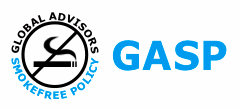A Tobacco Control Policy & Legal Resource Center
Supporting Smokefree Air & Tobacco-Free Lives
CDC/FDA report entitled “Flavored Tobacco Product Use Among Middle and High School Students – United States, 2014
The October 2015 MMWR published the CDC/FDA report entitled “Flavored Tobacco Product Use Among Middle and High School Students – United States, 2014” analyzed how flavored tobacco appeals to teens, since “[n]icotine exposure during adolescence, a critical window for brain development, causes addition, is more likely to lead to sustained tobacco use, and might have lasting adverse consequences for brain development.”
The report found:
- 24.5% of all high school students used one or more tobacco products in the past 30 days.
- 17.9% of all high school students surveyed used at least one flavored tobacco product, and 5.8% reported using only non-flavored tobacco products.
- Of the 17.9% of all high school students that used at least one flavored tobacco product, e-cigarettes (8.8%) were the most commonly used flavored tobacco product among high school students, followed by hookah (6.0%), cigars (5.3%), menthol cigarettes (5.0%), any smokeless tobacco (4.1%), and tobacco in pipes (0.7%).
- More high school students used flavored tobacco products than middle school students.
The also report found that 7 out of 10 middle and high school students who use tobacco products (or an estimated 3.26 million teens) also used at least one flavored tobacco product in the past 30 days:
- 63.3% used a flavored e-cigarette (estimated at 1.58 million teens).
- 60.6% used flavored hookah tobacco (estimated 1.02 million teens).
- 63.5% used a flavored cigar (estimated 910,000 teens).
- 53.6% used a menthol cigarette (estimated 900,000 teens); 70.5% of non-Hispanic blacks used menthol cigarettes vs. non-Hispanic whites (51.4%) and Hispanics (52.3%).
- 58.8% used any flavored smokeless tobacco (estimated 690,000 teens).
- 42.3% using flavored pipe tobacco (estimated 120,000 teens).
This CDC report concluded based on its report that “[s]ustained efforts to implement proven tobacco control policies and strategies are needed to prevent all forms of tobacco use, including flavored tobacco products, among U.S. youths.” The conclusion cited to restrictions on flavored tobacco sales in New York City, Chicago, Providence (RI), and Santa Clara (CA). Additional strategies were named to reduce youth tobacco use, including “raising the minimum age of purchase for all tobacco products to age 21.”
